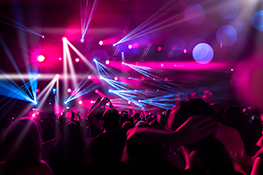Auditorium Lighting: Techniques for Professional Results
Auditorium lighting plays a crucial role in creating a captivating and engaging experience for audiences. From theatrical performances to presentations and concerts, the right lighting setup can enhance the overall aesthetic appeal, highlight key elements, and elevate the atmosphere. Whether you’re a seasoned lighting professional or just starting out, understanding the essential techniques for professional auditorium lighting is key to achieving stunning results.
Understanding the Basics
Before diving into specific techniques, it’s essential to understand the foundational principles of auditorium lighting. The primary purpose of auditorium lighting is to:
- Provide adequate visibility for the audience
- Enhance the visual appeal of the stage or presentation area
- Create a specific atmosphere and mood
- Highlight key performers or elements
- Support the overall artistic vision
Key Lighting Techniques
Effective auditorium lighting relies on a combination of various techniques. Let’s explore some essential methods:
1. Front Lighting
Front lighting is the most common and basic technique, illuminating the stage or presentation area directly from the front. This provides general illumination, ensuring clear visibility for the audience. Key benefits of front lighting include:
- Even and consistent illumination
- Reduces shadows on the stage
- Provides a natural look for the performers or presentation
2. Backlighting
Backlighting, as the name suggests, illuminates the stage or presentation area from behind. This technique creates a halo effect around the performers or objects, adding depth and dimension to the scene. Backlighting is particularly effective for:
- Separating the performers from the background
- Creating a sense of mystery or drama
- Highlighting hair or clothing details
3. Side Lighting
Side lighting illuminates the stage from the sides, creating shadows and adding texture to the scene. This technique is valuable for:
- Adding dimension and depth
- Sculpting the performers’ features
- Highlighting specific elements or movements
4. Downlighting
Downlighting shines directly down from the ceiling or overhead fixtures. This technique provides general illumination while also creating a focused spotlight effect. Downlighting is commonly used for:
- Creating a dramatic and intimate atmosphere
- Highlighting specific areas on the stage
- Directing the audience’s attention
5. Special Effects Lighting
Beyond the basic techniques, special effects lighting adds a touch of excitement and visual interest to auditorium performances. Examples of special effects include:
- Gobo projection: Projecting patterns, images, or text onto the stage or backdrop
- Moving lights: Using automated lights that move and change color
- Laser lights: Creating beams of light for visual effects
- Strobe lights: Creating flashing light patterns for dramatic effect
Choosing the Right Equipment
Selecting the appropriate lighting equipment is essential for successful auditorium lighting. Consider the following factors:
- Stage size and configuration: Determine the number and placement of fixtures required
- Type of performance: Choose lighting fixtures that align with the artistic vision and technical requirements
- Budget: Balance affordability with performance and features
- Control system: Choose a system that provides flexibility and ease of operation
Tips for Professional Results
To achieve professional-level auditorium lighting, follow these tips:
- Plan carefully: Create a detailed lighting design before the event
- Use multiple light sources: Combine various techniques to achieve balanced and engaging lighting
- Pay attention to color: Use color to create mood, emphasize elements, and enhance the visual impact
- Control the intensity: Adjust the brightness of light sources to create desired effects
- Consider safety: Ensure all lighting equipment is installed and operated safely
Conclusion
Mastering auditorium lighting techniques is an ongoing process that requires practice, experimentation, and a deep understanding of the art of light. By applying the fundamentals discussed in this article, you can create captivating and memorable lighting experiences for audiences, elevating the overall impact of your performances and presentations. Let Stagelights.in be your trusted partner for all your auditorium lighting needs. Contact us today to explore our wide range of lighting solutions and expert advice.
Contact Us
For any inquiries or to learn more about our products and services, please contact us at:
Phone: 1800 200 6000, +91 90150 60000
Email: info@stagelights.in


 Auditorium Construction Services
Auditorium Construction Services 